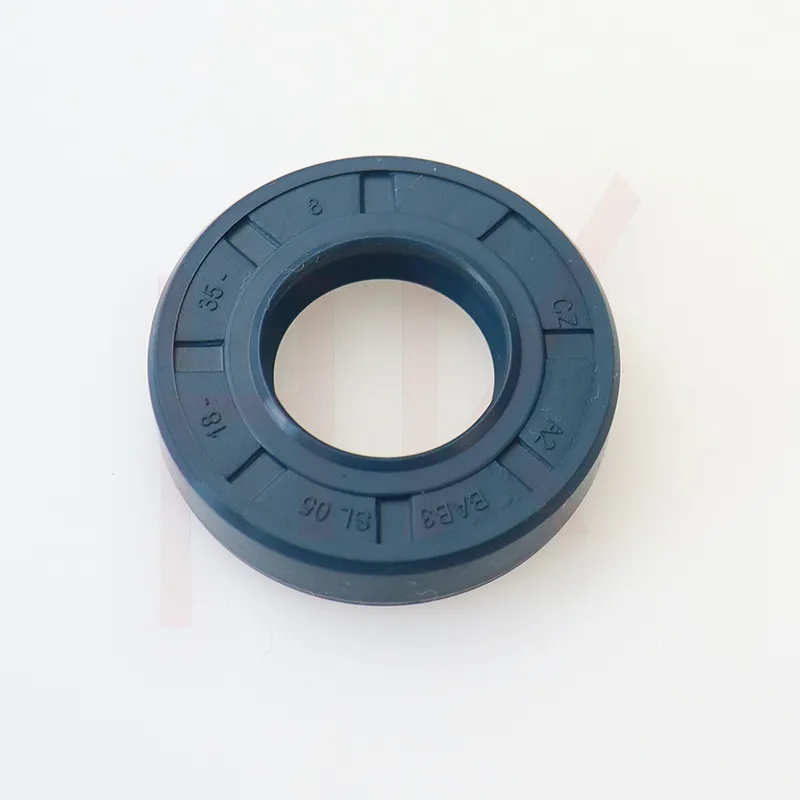Des . 03, 2024 10:44 Back to list
wiper seal
Understanding Wiper Seals A Key Component in Fluid Management Systems
Wiper seals are essential components in various mechanical systems, particularly those involving fluid dynamics. These seals play a crucial role in preventing contamination and leakage, ensuring the efficient functioning of machinery and equipment. This article explores the importance, types, applications, and maintenance of wiper seals, along with their role in enhancing performance and extending the lifespan of hydraulic and pneumatic systems.
What is a Wiper Seal?
A wiper seal, often referred to as a dust seal or a scrape seal, is designed to remove debris, dirt, and moisture from the surface of a rod or piston in hydraulic cylinders and similar machinery. Positioned at the outermost part of the sealing system, wiper seals act as the first line of defense against contaminants that could compromise the integrity and performance of the entire system. By effectively wiping away contaminants, these seals help maintain the cleanliness of the working environment and prevent damage to more sensitive seals located deeper within the assembly.
Importance of Wiper Seals
Wiper seals are critical to the longevity and effectiveness of hydraulic and pneumatic systems. The presence of dirt, dust, and moisture can lead to wear and tear on mechanical components, resulting in leaks, reduced efficiency, and ultimately, system failure. By keeping contaminants at bay, wiper seals contribute to the following
1. Preventing Damage They help protect expensive hydraulic and pneumatic components from abrasive particles that can cause scoring and premature wear.
2. Enhancing Performance Clean systems operate more efficiently. Wiper seals ensure that the fluid flow remains unobstructed, allowing for optimal performance.
3. Extending Service Life By reducing the likelihood of breakdowns and wear, wiper seals can significantly extend the lifespan of machinery, leading to reduced maintenance costs and increased uptime.
4. Improving Safety Leakages can lead to hazardous situations, especially in high-pressure systems. Wiper seals help mitigate these risks by maintaining system integrity.
Types of Wiper Seals
Wiper seals come in various designs and materials, tailored to meet the specific demands of different applications. Common types include
1. Polyurethane Wiper Seals Renowned for their excellent abrasion resistance, polyurethane wipers are suitable for harsh environments where durability is essential.
2. Nitrile Rubber Wiper Seals These seals provide good oil and abrasion resistance. They are commonly used in applications where oil exposure is present.
3. PTFE Wiper Seals Polytetrafluoroethylene (PTFE) wipers are known for their low friction and excellent chemical resistance, making them ideal for diverse fluid types and thermal conditions.
wiper seal

4. Metal-Wiper Seals These are used in heavy-duty applications where extreme conditions are prevalent. They offer robustness and longevity, often used in construction and agricultural machinery.
Applications of Wiper Seals
Wiper seals are widely utilized in various industries, including
1. Automotive In vehicles, wiper seals are found in hydraulic systems such as brakes and power steering, where they prevent the ingress of dirt and moisture.
2. Manufacturing Machinery used in manufacturing plants employs wiper seals to protect hydraulic actuators and cylinders, ensuring continuous operation in dirty environments.
3. Construction Heavy equipment such as excavators and bulldozers relies on robust wiper seals to endure the rigors of outdoor work and prevent contamination from dirt and debris.
4. Aerospace In the aerospace industry, wiper seals are critical for maintaining the integrity of hydraulic systems in aircraft, where precision and reliability are paramount.
Maintenance of Wiper Seals
Regular maintenance of wiper seals is essential for ensuring optimal performance. Here are some key practices
1. Inspection Regularly inspect seals for signs of wear or damage. Replace any seals that show signs of tearing, cracking, or hardening.
2. Cleaning Keep the surrounding areas clean to minimize contaminants that wiper seals may have to deal with.
3. Proper Installation Ensure seals are installed correctly to avoid leaks and ensure effective performance.
4. Monitoring Performance Keep an eye on system performance. Unusual changes could indicate a failing wiper seal, requiring immediate attention.
Conclusion
In summary, wiper seals are vital components that enhance the reliability and efficiency of hydraulic and pneumatic systems. Understanding their function, types, applications, and maintenance can help industries keep their machinery running smoothly and safely. As technology evolves, so too will the design and material options for wiper seals, ensuring they meet new challenges and demands across various sectors. By investing in quality wiper seals and maintaining them effectively, companies can safeguard their assets and optimize performance for years to come.
-
TCN Oil Seal Metal Ring Reinforcement for Heavy Machinery
NewsJul.25,2025
-
Rotary Lip Seal Spring-Loaded Design for High-Speed Applications
NewsJul.25,2025
-
Hydraulic Cylinder Seals Polyurethane Material for High-Impact Jobs
NewsJul.25,2025
-
High Pressure Oil Seal Polyurethane Coating Wear Resistance
NewsJul.25,2025
-
Dust Proof Seal Double Lip Design for Construction Equipment
NewsJul.25,2025
-
Hub Seal Polyurethane Wear Resistance in Agricultural Vehicles
NewsJul.25,2025
-
The Trans-formative Journey of Wheel Hub Oil Seals
NewsJun.06,2025
Products categories
















